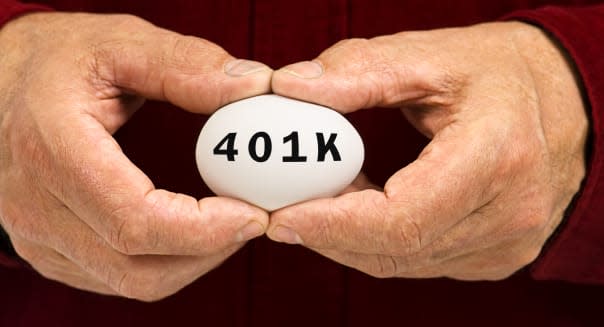5 Ways to Maximize Your Rigged 401(k) Plan

By Daniel Solin
Unfortunately, the primary purpose of your 401(k) plan seems to be to enrich just about everyone but you.
For starters, most 401(k) plans are bundled and lumped together with administrative fees and expenses charged by the funds in the plan.
The 401(k) vendor (mutual fund firms, brokerage houses or insurance companies) controls the investment options available in the plan. In most plans, actively managed funds (where the fund manager attempts to beat a designated benchmark) dominate the available options. Because these funds charge significantly higher management fees (called "expense ratios") than lower-cost index funds, the expected returns of active funds are lower than comparable index funds.
Mutual fund companies often pay a kickback (euphemistically called "revenue sharing") to be included as an investment option. Most index funds, exchange-traded funds and passively managed funds don't pay revenue sharing, so including them would require the company to kick in some cash to cover the overhead. That is unlikely to occur.
The primary beneficiaries of this cozy system are the mutual fund companies charging high fees for their actively managed funds. Participants are often confronted with a dizzying array of actively managed mutual funds, with few or no index fund options.
It would be fairly easy to fix this flawed system. In fact, the federal government has already shown us the way. The Thrift Savings Plan is a defined contribution plan administered by the Federal Retirement Thrift Investment Board, an independent government agency. The board is required to manage the plan "prudently and solely in the interest of the participants and their beneficiaries."
%VIRTUAL-WSSCourseInline-1003%What's so great about this plan? All of the investment options in the plan are extremely low-cost index funds. The plan has no actively managed funds and uses the leverage of its huge size to negotiate extremely low fees. Net administrative expenses in 2013 for five out of six Thrift Savings Plan funds were less than 0.03 percent.
Your 401(k) plan should emulate the features of the Thrift Savings Plan. It should offer portfolios of index funds, ETFs or passively managed funds at various risk levels. It shouldn't have any actively managed funds as investment options. It should negotiate the lowest fees it can, based upon the size of the plan.
Unfortunately, this is not going to happen. You are likely going to be left with trying to make the best of a bad 401(k). Here are some suggestions to do so:
1. Look for index funds. Although most plans are dominated by poor investment choices, many of them will toss in a few index funds for optics. If you can find a domestic stock index fund, an international stock index fund and a bond market index fund, you will be able to put together a portfolio with a suitable asset allocation (the division of your funds between stocks and bonds).
2. Focus on fees. If you are stuck with choosing from investment options consisting only of actively managed funds, pick the ones in each asset class with the lowest expense ratio. Avoid all funds that hit you with a sales charge.
3. Avoid company stock. Some companies encourage the purchase of company stock in 401(k) plans. They may even make matching contributions in company stock. You should avoid purchasing company stock in your 401(k) plan. You are already "invested" because you depend on your company for your paycheck. It would be a devastating blow if your company went out of business and you lost your job. Don't compound that risk by adding company stock to your 401(k) plan.
4. Be wary of financial advice. The same fund families that manage high-expense-ratio, actively managed funds in your plan often offer "financial advice" to plan participants. You should be wary of this advice. It is rife with conflicts. The fund family increases profits by steering you into its more expensive funds (including its proprietary funds) and away from low-cost index funds. It is in your best interest to focus on fees and select low-cost index funds if they are available.
Relying on sound financial advice from those people who populate your plan with poor choices is akin to hiring the fox to guard the hen house.
5. Minimize your reliance on your 401(k) plan. If you have a bad plan and your employer does not make any matching contribution, consider not participating. If your employer does offer a match, consider contributing the minimum amount necessary to obtain the maximum employer contribution.
Supplement your retirement savings by opening an individual retirement account (either a traditional IRA or a Roth IRA, if you qualify) and invest some of the money that you normally would have tucked away inside your 401(k). With your own IRA, you control your investment choices.
The securities lobby has successfully opposed meaningful reform of the 401(k) system. There is little incentive for Congress to act in your best interest. After all, its members are beneficiaries of a superbly run 401(k) plan, and they apparently don't believe your plan should replicate theirs.
You are basically on your own to navigate around a system that many believe is a national disgrace.
Dan Solin is the director of investor advocacy for the BAM Alliance and a wealth adviser with Buckingham. He is a New York Times best-selling author of the Smartest series of books. His latest book, "The Smartest Sales Book You'll Ever Read," has just been published.

